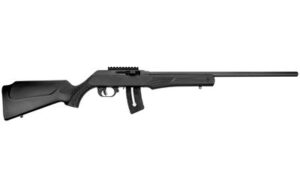Automatic vs Semi automated riffle If you’re new to firearms or just want a clearer understanding of how different guns work, you’ve probably come across the terms semi-automatic and automatic. While they might sound similar, they refer to very different firing mechanisms—and those differences matter legally, functionally, and practically.
In this article, we’ll break it down clearly so you can understand what sets these firearms apart, how they operate, and why the distinction is important. Automatic vs Semi automated riffle
What Is a Semi-Automatic Firearm?
A semi-automatic firearm fires one round per trigger pull. After each shot, the gun automatically ejects the spent casing and loads the next round into the chamber. However, the shooter must pull the trigger again to fire the next shot.
How It Works:
-
You pull the trigger once.
-
The firearm fires a single round.
-
The casing is ejected.
-
A new round is chambered.
-
You must pull the trigger again for the next shot.
Common Examples:
-
Most modern handguns (like Glock or Sig Sauer pistols)
-
AR-15-style rifles (civilian models)
-
Many hunting rifles and shotguns
Semi-automatic firearms are widely owned in the U.S. and are generally legal to purchase and use, with some state restrictions on features or magazine capacity.
What Is an Automatic Firearm?
An automatic firearm, often called a fully automatic or machine gun, continues to fire rounds as long as the trigger is held down—until the magazine or belt runs out of ammunition.
How It Works:
-
You pull and hold the trigger.
-
The firearm keeps firing continuously.
-
It stops only when you release the trigger or run out of ammo.
Common Examples:
-
Military rifles like the M4 or M249 SAW
-
Submachine guns like the MP5
-
Belt-fed machine guns used by armed forces
Automatic firearms are heavily restricted in the U.S. under the National Firearms Act (NFA). Civilians can legally own them only if:
-
The firearm was manufactured before 1986
-
They obtain a special license, including extensive background checks and tax stamps
-
They live in a state where automatic weapons are legal
Key Differences at a Glance
| Feature | Semi-Automatic | Automatic |
|---|---|---|
| Trigger Action | One shot per trigger pull | Fires continuously while trigger is held |
| Firing Speed | Slower, controlled | Rapid, full-auto burst |
| Common Use | Self-defense, sport shooting, hunting | Military, law enforcement |
| Legal Status | Generally legal (with restrictions) | Heavily restricted and regulated |
| Ammo Consumption | Controlled, more economical | High, faster depletion |
Why This Matters
Understanding the difference is important for both legal reasons and responsible ownership. The term “automatic weapon” is often misused in media and public discussions, leading to confusion about what types of firearms are actually available to civilians.
For example, civilian-owned AR-15 rifles are semi-automatic, not automatic. Unless modified illegally (which is a federal crime), they operate just like any other semi-auto firearm.
Knowing how these guns work also helps you make better buying decisions and ensures you stay compliant with state and federal laws.
Final Thoughts
The biggest takeaway? Trigger control matters. Semi-automatic firearms fire once per pull, while automatic firearms keep firing as long as the trigger is pressed. This distinction affects everything from functionality and training to legal ownership.
If you’re in the market for a firearm or just learning the basics, make sure you understand these differences before making a purchase or forming an opinion. The more you know, the more confident and responsible you become as a gun owner or enthusiast.
👉 Looking for reliable semi-automatic firearms or accessories?
Explore our top selection of handguns, rifles, and ammo at Atlantic Outdoor Guns.
Shop Now and carry with confidence.




No comment